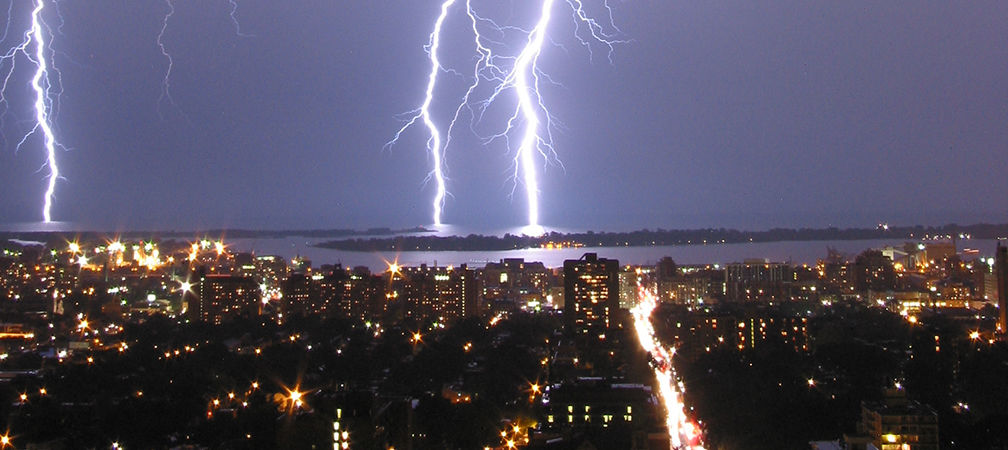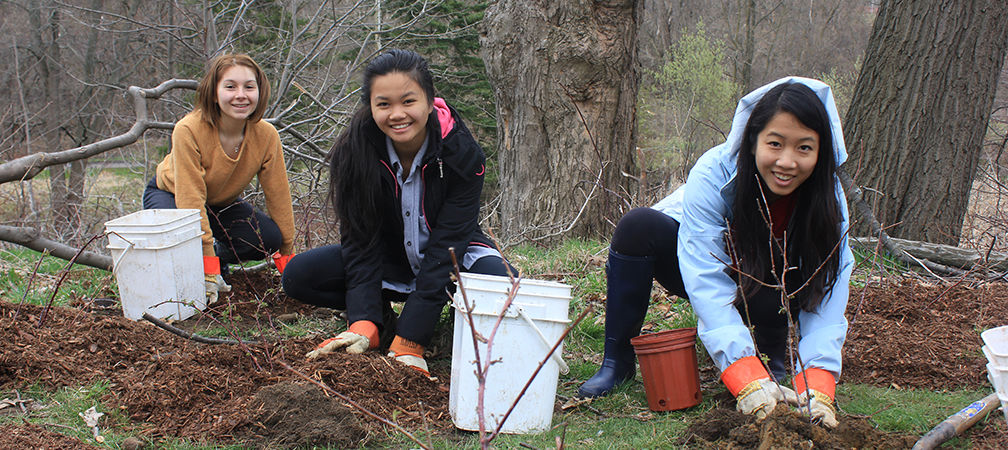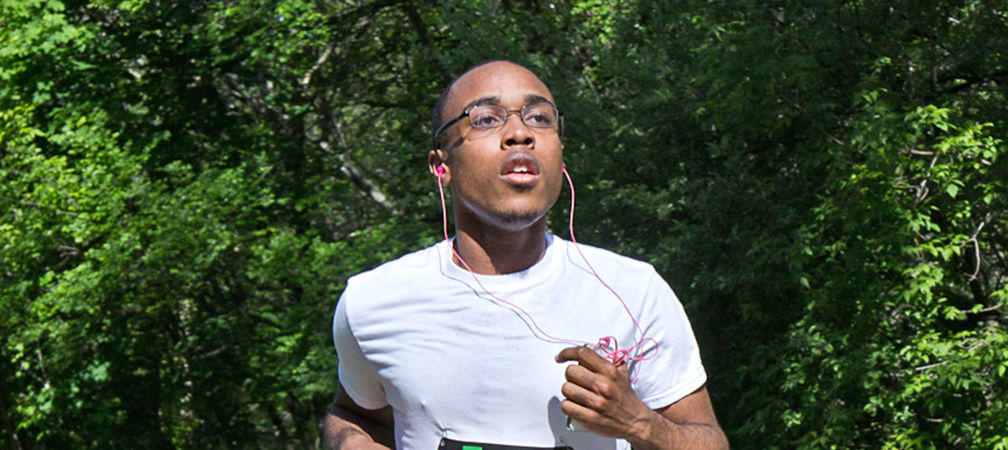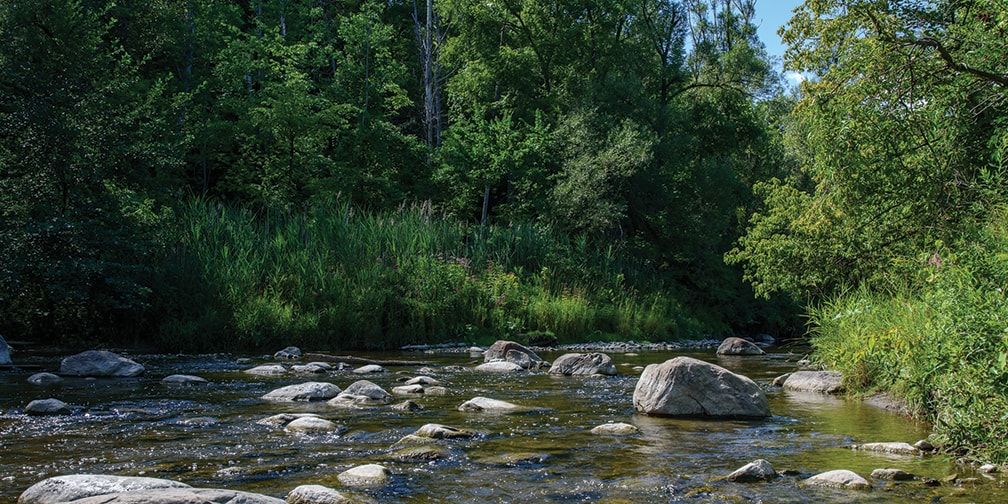Ontario Nature Blog
Receive email alerts about breaking conservation
and environmental news.
© Lora Denis
Trinity Bellwoods Park © Amber Dawn Pullin CC BY-ND 2.0
Trees in and around urban areas maintain healthy communities. Trees not only provide the oxygen we breathe, they also play a vital role in climate change mitigation and adaptation, air pollution removal and energy conservation. But what if these benefits were purposely funneled to benefit only some communities?
A report from the City of Toronto estimates that Toronto’s urban forests provide the equivalent of $28 million in ecological services annually. For instance, trees in Toronto improve air quality by removing 1,905 metric tonnes of air pollution per year, which is valued $16.9 million. They mitigate climate change effects from CO2 emissions by storing 46,700 metric tonnes of carbon per year, valued at $1.1 million.
Additionally, planting trees near buildings can significantly reduce surface temperature, which saves $9.7 million in energy costs annually, and provides $483,600 in value per year by reducing carbon produced by fossil fuel power plants.

Despite these well-documented benefits, trees are suffering from rising temperatures, especially when combined with drought. A recent report from the Greenbelt Foundation identified the significant impacts climate change is having on Ontario’s forests and communities. These include difficulties surviving hotter and drier summers, increased vulnerability to intense storms (which are projected to become more common in the Greater Golden Horseshoe), as well as novel pests and diseases (like emerald ash borer and Dutch Elm Disease).
The report also explains that urban forests are threatened by development projects, which often require cutting down trees. Even if new trees are planted, they don’t readily provide as many benefits as mature trees do.

Tree planting efforts in Toronto must be maintained at the current rate to achieve 40% tree canopy in the city within 50 years. One way we can become forest stewards is by learning about urban forests and understanding their history. For example, if you live in the Greater Golden Horseshoe, you are sharing your home with some of Ontario’s oldest forests, which are located in the Oak Ridges Moraine.
The Greenbelt Foundation suggests that we can teach our kids about our local forests by finding out how to visit forests respectfully, learning about the trees in areas like the Oak Ridges Moraine and Niagara Escarpment (such as learning how to identify them), paying attention to how forests change with the seasons, becoming a community scientist (using resources like the iNaturalist app), and understanding the relationship between people and forests.

Understanding our relationships to the land is important, though complex. For this report, the Greenbelt Foundation partnered with University of Toronto PhD student and founder of Black Outdoors, Jaqueline Scott, who studies the intersection of trees, race and Black history. Scott explains in the report that tree planting can sometimes diverge from Indigenous sovereignty when the message promotes settler-colonial notions of being rooted in the land. She also argues that “Planting trees is one of the easiest ways to improve the environment in the city and to reduce the negative impact of the climate crisis.
However, race shapes where trees are planted, who benefits from the trees and who takes part in tree planting.” Scott says that when tree planting initiatives take place in the City of Toronto, they are often geared to benefit rich White neighborhoods, whereas racialized and low-income neighborhoods often have less access to green spaces. In this unequal distribution of benefits, “the absence of trees is another layer of inequality in lives shaped by oppression,” she says.

The benefits of urban forests go beyond economic gains; human health is also substantially increased by the presence of trees. Thus, being a steward of these important ecosystems through protecting trees, tree planting and education is essential to our communities’ wellbeing. Having equitable access to the land and building relationships of trust with underrepresented communities is also an important step. Urban forests need us all to advocate for the protection of the land.

Gananoque Lake Nature Reserve © Smera Sukumar
Thanks for sharing the blog.
thankyou soo much for the article. i really loved it.
You made a good point when you mentioned that trees play a critical role in maintaining healthy communities. My friend wants to ensure that their project won’t negatively affect the environment. I think they should turn to a company that offers forester consulting services to achieve an environmental friend approach.
https://rootsforestry.com/
Thanks for sharing the blog.
Thank you for reminding your readers of the amazing value of trees.